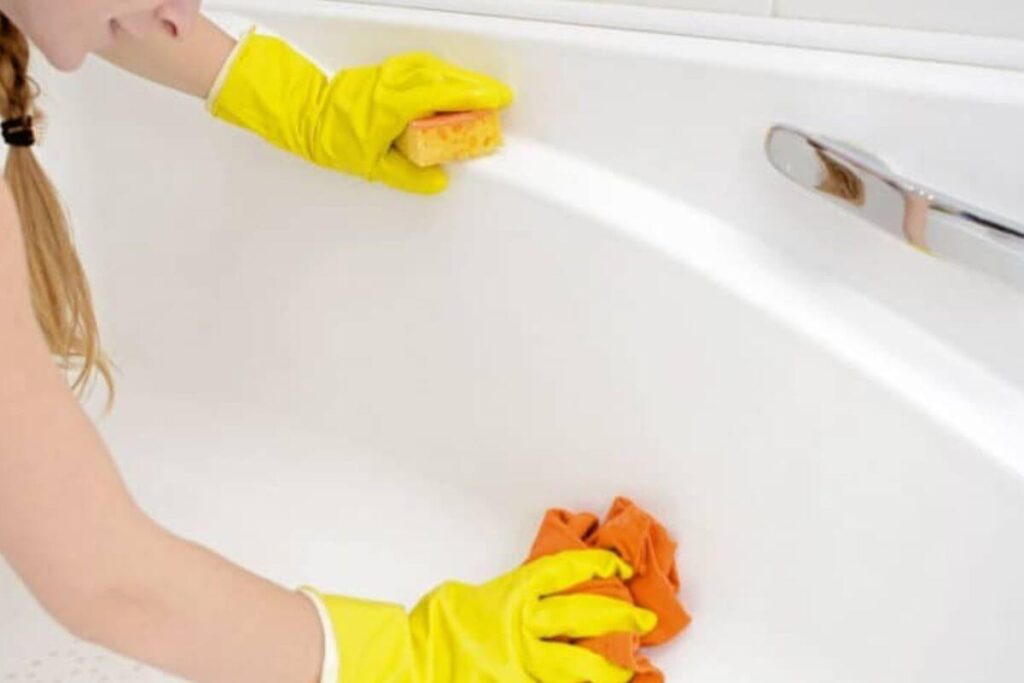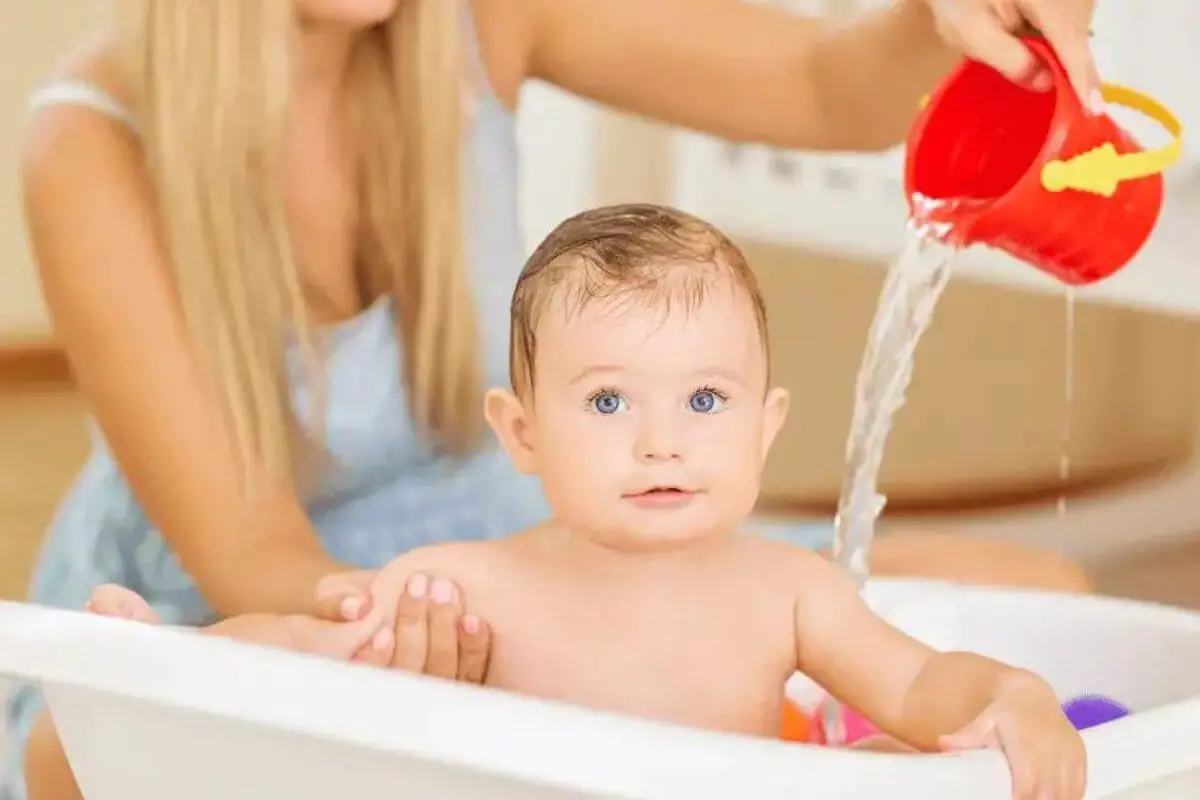Bathing your baby is usually a delightful and bonding experience, but every parent knows that unexpected situations can arise. One of those surprises might include the scenario where your baby poops in the bath. While it’s not a pleasant situation, it’s essential to stay calm and handle it with care. In this comprehensive guide, we’ll walk you through what to do if your baby has a bathroom accident in the bath and how to maintain a clean and safe environment for your little one.
Stay Calm
First and foremost, it’s crucial to remain calm and composed. Babies are highly sensitive to their caregivers’ emotions, and reacting with panic or frustration can upset them. Take a deep breath and focus on resolving the situation in a composed manner.
Remove the Baby
Gently and swiftly, remove your baby from the bathwater. Be cautious and ensure you provide ample support to prevent any slipping or discomfort.
Empty the Bath
Carefully empty the bathwater, taking care not to spill any contaminated water. If your baby had a bowel movement, it’s best to dispose of the water rather than trying to save it. Sanitary disposal is key in this situation.
Clean the Tub
Thoroughly clean and disinfect the bathtub to ensure it’s free from any lingering bacteria or germs. Use a suitable cleaning agent that is safe for your baby’s delicate skin.

Sanitize Bath Toys
If there were any bath toys in the water during the incident, be sure to sanitize them. This will prevent any potential contamination.
Clean Your Baby
After removing your baby from the bath, clean them carefully. Use a mild and gentle baby soap to wash their body, paying extra attention to the diaper area. Rinse your baby thoroughly to remove any soap residue.
Monitor for Ill Effects
Babies are curious and might explore their environment with their mouth. If your baby ingested any bathwater, monitor them for any signs of illness or discomfort. If you notice any unusual symptoms, contact your pediatrician.
Prevent Future Accidents
To minimize the likelihood of future accidents, you can take the following precautions:
- Ensure your baby has a clean diaper before bath time.
- Pay close attention during the bath to detect any early signs that your baby needs to use the toilet.
- Consider scheduling bath times after your baby’s regular bowel movements to reduce the chances of accidents.
- Be prepared for emergencies by keeping supplies like clean towels, soap, and a diaper nearby.
Stay Positive
Remember that accidents happen, especially with babies. It’s all part of the learning and growing process. Stay positive and reassure your baby that everything is alright. Maintaining a calm and supportive atmosphere will help your baby feel safe and secure.
Seek Medical Advice if Needed
If you notice any concerning symptoms or if your baby seems unwell after the incident, don’t hesitate to contact your pediatrician for guidance and support.
In conclusion, dealing with a baby pooping in the bath is an inevitable part of parenthood. The key is to stay calm, act swiftly, and maintain a hygienic environment for your baby. By following these steps and remaining composed, you can turn an unexpected situation into a manageable one and continue enjoying those special bath time moments with your little one.
Tips for Smooth Bath Time
Bath time is not only an essential part of your baby’s hygiene but also an opportunity for bonding and fun. To ensure a smooth and enjoyable bath time, consider the following tips:
Create a Safe Environment
- Before bath time, ensure the room and bathtub are at a comfortable temperature. Use a baby thermometer to check the water temperature, which should be around 100°F (37.8°C).
- Gather all necessary supplies, including a mild baby soap, soft washcloth, baby shampoo, a towel, clean diaper, and fresh clothes. Having everything ready prevents the need to step away from the baby during the bath.
- Use a non-slip bath mat in the tub to prevent your baby from slipping.
- Keep a hand on your baby at all times during the bath to ensure they are secure.
Set a Routine
- Establish a regular bath time routine. Babies thrive on consistency, and a predictable routine can help them feel safe and comfortable.
- Make bath time enjoyable by singing songs, talking to your baby, and using gentle, soothing words. This interaction fosters bonding and turns bath time into a positive experience.
Choose Appropriate Bath Products
- Select baby-friendly bath products that are mild and gentle on your baby’s sensitive skin. Avoid using adult products, as they may contain harsh chemicals that can be harmful to your baby.
- Baby shampoo and soap are designed to be tear-free, which is crucial in case soap accidentally gets in your baby’s eyes.
Be Mindful of Handling
- Support your baby’s head and neck at all times, especially if they are not yet able to sit independently.
- Use one hand to hold your baby’s underarms while bathing with the other. This provides additional support and keeps your baby secure.
Keep It Short and Sweet
- Bath time for babies doesn’t need to be lengthy. A few minutes of gentle cleansing and play in the water is usually sufficient.
- Extended exposure to water may lead to dry skin, so it’s best to keep bath time brief.
Dry and Dress Carefully
- After the bath, pat your baby dry with a soft, clean towel. Pay particular attention to drying those adorable baby rolls, as moisture can accumulate there.
- Apply a mild, fragrance-free baby lotion to keep your baby’s skin moisturized.
- Dress your baby in clean, comfortable clothes, and ensure the diaper is snug but not too tight.
Bonding Time
- Use bath time as an opportunity to bond with your baby. Talk, make eye contact, and share smiles to make the experience enjoyable and memorable.
In conclusion, bath time is a significant part of your baby’s daily routine, and it’s essential to make it a positive and safe experience. By following these tips and taking necessary precautions, you can ensure that bath time becomes a cherished moment for you and your baby, helping to strengthen your connection and provide comfort and care.
Of course! Here are some frequently asked questions (FAQs) related to baby bath time:
FAQS
1. How often should I bathe my baby?
The frequency of baby baths can vary. In the early months, you can give your baby a sponge bath a few times a week, gradually transitioning to full baths as they become more mobile. Generally, 2-3 times a week is sufficient, but always adjust based on your baby’s needs and preferences.
2. What is the ideal water temperature for a baby’s bath?
The recommended water temperature for a baby’s bath is around 100°F (37.8°C). Use a baby bath thermometer to ensure it’s not too hot or too cold. Always check the water temperature before placing your baby in the bath.
3. Can I use regular soap and shampoo on my baby?
It’s best to use baby-specific soap and shampoo. These products are formulated to be gentle on a baby’s sensitive skin and are often tear-free. Avoid using adult products, as they may contain harsh chemicals that can irritate a baby’s skin.
4. When should I start using baby lotion?
You can begin using a mild, fragrance-free baby lotion after bath time when your baby is a few weeks old. It helps keep the skin moisturized and prevents dryness. Always choose products designed for infants.
5. What if my baby cries during bath time?
Babies may cry during bath time for various reasons, such as being cold, hungry, or simply needing comfort. Ensure the room is warm, maintain eye contact and talk to your baby soothingly. Making bath time a positive experience through gentle interaction can reduce crying.
6. Is it safe to use bath seats or rings for a baby?
Bath seats and rings can be useful for providing support as your baby grows and becomes more stable. However, they should not replace the direct supervision and support of a parent or caregiver. Always keep a hand on your baby to prevent any accidents.
7. How can I prevent baby from slipping in the bath?
To prevent your baby from slipping in the bath, use a non-slip bath mat or cushion in the tub. Additionally, be attentive and maintain a secure grip on your baby throughout bath time.
8. What if my baby has a diaper blowout during the bath?
If your baby has a diaper blowout during the bath, follow the steps mentioned earlier for cleaning your baby and the tub. Maintain a calm and composed demeanor to reassure your baby.
9. Can I bathe my baby in a regular bathtub or a baby-specific tub?
You can use a regular bathtub with a non-slip mat, or you can choose a baby-specific tub. The key is to ensure the environment is safe and secure. Baby tubs are designed to make bath time more manageable.
10. When should I stop supporting my baby’s head and neck during the bath?
You should continue supporting your baby’s head and neck during the bath until they have developed the necessary neck strength to hold it up independently. The timing can vary from one baby to another, so be attentive to your baby’s developmental milestones.
Remember that baby bath time is a learning experience for both you and your little one. As you become more accustomed to your baby’s preferences and needs, bath time will become a routine that you both look forward to and enjoy.



